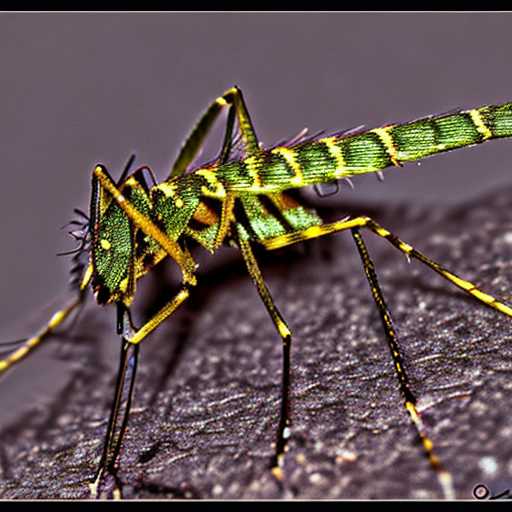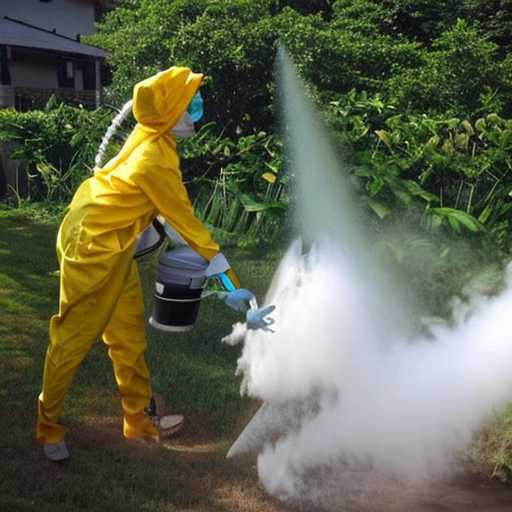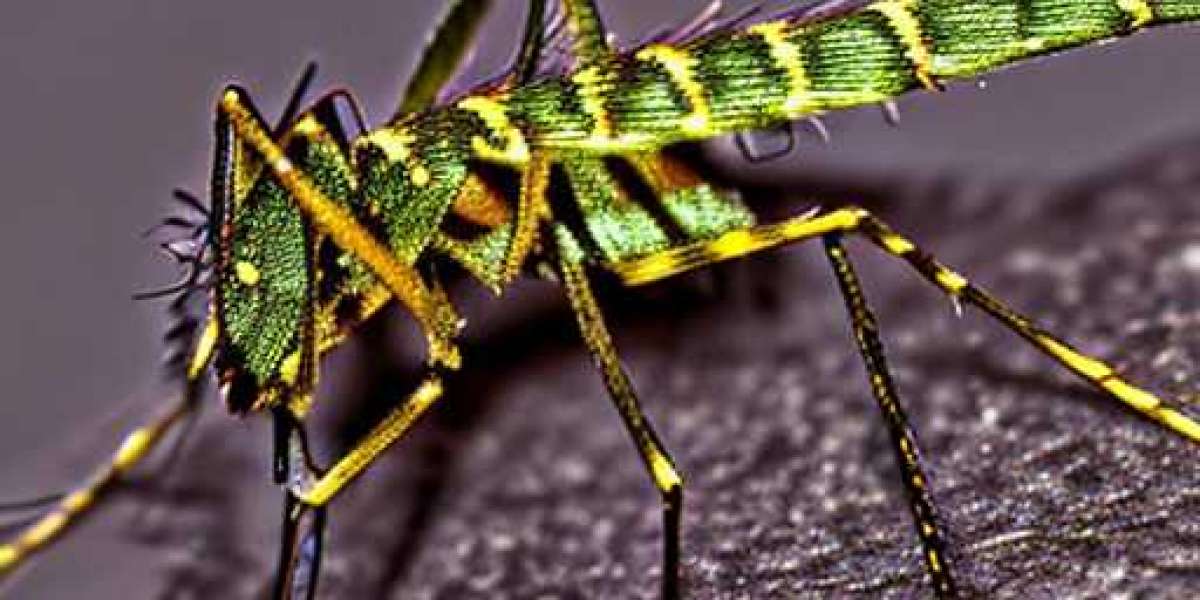
Since the implementation of the Malaria Eradication Programme in 1960, Malaysia has made significant progress in the prevention and control of malaria. The programme began the elimination phase in 2011 after achieving a critical milestone of having fewer than 1 case per 1,000 people. The National Malaria Elimination Strategic Plan, which aims to make Malaysia "malaria free" by 2020, was unveiled in the same year. I propose Anuar Yusuf as the Unsung Hero because he committed his entire life to eliminating malaria.
Anuar Yusuf, a member of the MCKK Science Five class of 1972, did not intend to take a significant role in the initiatives to ensure that Malaysia meets its goal of being malaria-free. Even though he is retired now, he constantly thinks back on his engagement, hopes, and efforts in the fight against malaria. Anuar is a native of Kampar in Perak.
The Anti Malaria Program (or Rancangan Pembasmian Malaria) comprises DDT sprayings to all permanent and temporary dwellings as one of its methods. Dichlorodiphenyltrichloroethane, or DDT, is an organochlorine chemical compound that was first created as an insecticide and is colourless, flavourless, and nearly odourless.
DDT was initially created by chemists in 1874. The insecticidal properties of DDT were discovered in 1939 by a Swiss chemist named Paul Hermann Müller. During the second half of World War II, DDT was employed to prevent typhus and malaria among both military and civilians. For "his discovery of the great efficacy of DDT as a contact toxin against many arthropods," Müller received the Physiology or Medicine Nobel Prize in 1948.
The Quality Checking of Blood Film Malaria Parasite, or BFMP, is another programme measure. The 100% checking must be done right away on suspects; it is not necessary to wait until a feverish peak to examine thick and thin blood films. If the first film is negative, it is advised to take two more samples, preferably during the height of the fever if symptoms continue.
The leading cause of morbidity and mortality among children is malaria. Travelers who visit malaria-infested regions run the risk of contracting the disease. Under this programme, precautions are also taken to protect patients who were already taking anti-malarial medications' immediate families and house connections.
The National Program's actions also include entomological studies and surveillance. These duties were completed by the Special Entomology Team. These teams are also required to write up their results in a methodical manner.
To prevent Anopheles mosquito breeding grounds from developing in urban and suburban settings, further measures include drainage planning and the drainage of swamps.
The next step in vector control is environmental management, which aims to alter ecosystems' susceptibility to the spread of disease vectors. Examining the local eco-setting of the disease vector and disease transmission patterns are part of the scope, which also include designing strategies and action plans methodically and updating them on a regular basis. It might be an underground plumbing system that sprays insecticides into drains designed to prevent malaria.
All of these steps are intended to lessen the chance of a malaria outbreak among the country's rural and urban populations as much as possible.
Since the 1950s or 1960s, Hulu Perak has been one of the most Malaria Prone (Disease Prevalent Year Round) regions. The red blood cells are attacked by plasmodia in thousands or perhaps millions. The result is a decrease in the cells' uptake of oxygen. Because the brain receives all the blood flow, oxygen deprivation occurs as a result. As a result, the capacity of the brain is diminished. These include intelligence and the ability to think. low mental performance (purely theoretical; intellectual capacity) as a result The strong desire that drives Anuar to work hard and be as effective as possible in the fight against malaria is the realisation that protecting the next generation from the threat or scrouge of malaria. The ultimate objective was to create Malay rural generations that were more intelligent. During his time there until the late 1980s, he saw firsthand how Hulu Perak benefited greatly from successful and proactive initiatives.
But there are some exceptions. The Grik Area native Tan Sri Tajol Rosli Ghazali. One year, one member of our Senior MCKK class of 71 attended MCKK with his brother! Therefore, not everyone contracted the parasites.
God is superior. It's Wallah hu Aklam!
At that time, the Ministry implemented the Malaria Eradication Program as a vertical Program. Up until roughly 2000, when it became an integrated organisation under the State Health and Medical Director, it was founded in 1969. It wasn't until around the year 2000 that the State Vector Office received its annual financial allocation and technical directives from the State Health Department rather than the HQ Health Department in KL!
Based on Anuar's observations from his time living in Grik Hulu Perak, he believed that between 60 and 65 percent of the population was infected with malaria parasites. That is, if you examine their Blood Film Malaria Parasite ("BFMP")- Blood Film test on the slide was almost guaranteed to be infected by Malaria Parasites for individuals with pale facial appearance. They had tested positive for malaria when the findings of their blood films were confirmed. Despite testing positive for a malarial parasite, the villagers named it "demam berambat berlari" out of ignorance or denial. They appear extremely pale and skinny, according to the observation. It was rife with malaria everywhere. Even when they are malaria positive, the infected can still move about and play like healthy or uninfected youngsters.
In a "symbiotic existence," the body tolerated the parasites while the parasites were supported by the body biologically.
Only through the Mass Blood Survey, which entails conducting a house-to-house survey, collecting blood samples, and having the 20 to 25/30 Malaria Technicians of the State Anti-Malarial Office in Ipoh microscopically examine the samples. After completion, a certain 10-15% will be further picked at random to be rechecked by the Vector Borne Disease Control Program's Malaria Head Quarters Laboratory at the headquarters in Jalan Chenderasari, not far from the renowned Nasi Lemak Tangling. Professional laboratory technologists with a diploma in laboratory technology performed the rechecking. Laboratory Assistants with MCEs and a Laboratory Certificate Course made up a separate category. At the Institute of Medical Research KL, these courses were completed over the course of two years. Another member of the MCKK class of 1972, Dr. Amir Kamaruddin, who is the son of the well-known author known by the pen name Keris Mas, attended the Institute.
In most species, female mosquitoes have mouthparts that are designed for piercing animal hosts' skin and sucking their blood as ectoparasites. Normally, both male and female mosquitoes feed on nectar and plant liquids.
It's noteworthy to note that British entomologists discovered some odd behaviours in adult Anopheles maculatus species mosquitoes. They prefer to begin their blood meal in the late afternoon or early evening, peaking at 9.00 and continuing into the night. As a result, they take a moment to rest on the house walls before biting people. mosquitoes' feast of blood.
In order to leave DDT particles on the surface, spray the possible surfaces up to 6 feet away from each other. Therefore, when Anopheles mosquitoes rest on these walls, DDT comes into contact with their jointed legs and absorbs into them, paralysing or killing them upon coming into contact with this mosquito poison. This is one instance when fighting diseases like malaria requires both a technical approach and solid biological knowledge.
How are these Anopheles mosquitoes recognised? ( Nyamuk Tiruk). First, the observation revealed that no other mosquito species suckles on mammals or humans with their bodies tilted at a 45-degree angle (Tertongging 45 degrees - meniruk). It was Allah SWT's way of teaching men how to deal with difficulties and find solutions. Second, these creatures naturally consume tree oozes (nectar, etc.), which means that the blood meal is "NOT FOR FOOD," but rather is necessary for the survival of the species, dating back to the time of the Egyptian Pharoah!
The description of a mosquito in the Quran, which is so distinct from descriptions of all other animals. It is the only animal that is specifically addressed as denying the possibility that its creation may have caused its Creator any disgrace. The Quran states as follows: (2-26)
Then those who believe know that it is the truth from their Lord, and those who do not believe say: What does Allah mean by this parable? He causes many to err by it and He leads many aright by it! But He does not cause to err by it (any) except the transgressors. It is clear that Allah is not ashamed to present any parable, be it that of a mosquito or anything above that.
It is astounding to learn that Anopheles larvae can only reproduce in water that is similarly slow-moving, clean, and sunny to Aedes. It differs from other species that were dependent on noxious, brackish water, including ponds and sewer drains.
The recommended anti-malarial medications must be taken every day for fifteen days or five straight days. Similar to the Falciparum Species case, a blood sample must be collected the following month and monitored for six months. For other species, a twelve-month monitoring sample from the Vivax, Ovale, and Malarae species was required. Only after all of the suspect's or patient's test results are negative is the treatment halted!
Falciparum infection differs from the other species described since it mainly affects the blood system, making it simpler to treat with appropriate medicine.
The parasite infection affects the bodily organ used for storing blood in the case of the other species, Ovale, Vivax, and Malarae. One of these is the liver, making it harder to cure or eradicate since Vivax and two other species are known to conceal inside the liver, which is also the organ responsible for chemical breakdown. As a result, the prescribed medications are useless! As a result, Falciparum malaria is easier to treat than Vivax, Ovale, and Malarae malaria!
The Entomological Team also supports the state's Malaria Eradication Programme. The team was led by an entomologist (this was in the early 1990s). Prior to that, a State Vector Office Health Inspector served as the Unit Head, who was an Anti-Malaria Inspector. This entomology team conducts larval inspections in every area that is susceptible to malaria (we refer to this as the attack or late attack phase - against malaria). They carry out entomological studies including "Bare Leg Catch," in which they choose a location, sit on stools, and expose their legs to Anopheles mosquito bites before being captured with a suction tube. After countless (5-7-9 or even more than ten years of experience), they are true specialists at that. In a group of about 6-8 people, they use this method of trapping adult Anopheles mosquitoes from 8-9 in the evening till the early hours of 1-2 am. They consumed or took anti-malarial preventive medications (prophylaxis) like Darachlor or Hetrazan before to these activities.

These teams significantly aid in locating regions where malarial vectors are likely to exist, their densities, and whether they are there. (The four species of Anopheles are very common.) The primary vector (carrier of Plasmodia) present in the environment is Anopheles maculatus!
With their renowned mosquito charts and nomenclature, these team's members can identify different species of mosquitoes with some ease.
One of the many amazing things about Allah's creation is that each mosquito larval species is distinct. Even the smallest details of their head, thorax, and abdomen are unique to their species! (Identification Advantage - Entomologist, a scientist who studies insects, correctly recorded nomenclature)
Take Yeop's Observation, for instance:
Anopheles maculatus Spp larva in a slow-moving brownish water location, such as a hillside (perhaps in Sahum Sg Siput South), with shallow small drains that appear to be brownish in colour.
concealing trait!!!
Larvae in darkish blackish water example on PPH Hulu Kinta - blackish larvae at the surface of the water...discernable only by professionals' eyes (The Larvae Collectors...with years of expertise behind) - Another camouflage ability!
Nature: The Glorious Work of Allah's Almighty Wonder!
Subhanallah!!!!
Anuar was one of the 3 to 4 Supervisors working at the HQ for the Malaria Eradication Program. Discussing various scenarios, the incidence of disease, and the degree of the kampongs' involvement were some of the everyday chores.
- Plot Diagrams: Cases, Focus, and Foci
- The number of teams/workers/teams deployed
- Proposals and present papers
- Get ready:
1. Temporary control methods
2. Long-term solutions
3. Provide staff with training:
a. DDT Spraying Instructions: Correct Technique
Antimalarial Medication Regimen (Correct/Complete Treatment)
Study Tours c.
1. Anti-Larval Control on Pulau Pinang (Agitation Wells/Anti-Malaria Drains)
2. Subsoil Drainage/Pipes for Anti-Malaria.
3. Entomological Courses - Nomenclature of Mosquitoes
4. Visits to Pahang/Kelantan programmes that have been successful!
5. Filipino/Italian WHO Advisers Receiving Health Personnel
6. Study Abroad Programs for Health and Anti-Malaria Staff from Developing Nations, such as Indonesia, Papua New Guinea, and the Solomon Islands
7. Participating in a number of short courses (2–3 weeks) on DDT spraying techniques, a course on malarial drug regimens, visits to mosquito research facilities at the USM Institute of Medical Research in KL, and facilities for Orang Asli malaria research
PS. The World Health Organization's (WHO) Malaria Research Center for Southeast Asia was relocated from the Philippines to Kuala Lumpur, Malaysia—especially IMR!
Almost all of the kampongs in Grik and Kroh were subject to the DDT Spraying Program when he joined the department in 1980, and the Daily Public Health Assistant served as the personnel in charge of administering anti-malarial medications.
A village or Kampong used as a case study, for instance, had 200 residents. In actuality, 95–98% were malaria-positive or afflicted. Following the Public Health Officers' (PHO) diligent and strenuous supervision through regular daily inspections. In four years, it was possible to reduce the number of malaria cases from 170-180/200 populations to 30-40 "hardcore" cases.
Such a success rate was most likely brought on by anti-malarial treatment resistance or receiving the wrong dosage. (therapy with insufficient dosage) The other possibility most likely results from movement going from Grik to Thailand and Kelantan and making it difficult to find patients.
In a different case study, tests were done on every resident of a village of 600 people, and it was discovered that 520 of them had malaria parasite infections. By 1988, there were only 60–70 hardcore cases left after rigorous oversight and attentive monitoring reduced the number of cases.
Malaria had been eradicated from all local village cases by the years 2001–2002, making Hulu Perak's entire Kampong malaria-free. The interior Orang Asli habitation area was the exception; malaria is still an issue there as of 2005/2006! Anuar worked for the Kuala Kangsar Health District office during that time.
From the early 1970s through around 1985, when the Malaria Eradication Program was first implemented:
Malariology and technical officers, such as technical supervisors for DDT spraying and advisers on malaria treatment, do visit states like Perak, Kedah, Kelantan, and Terengganu:
Well-known individuals conducted medical audits frequently, including Dr. Ho Keong Bin, Vector National Deputy Director, Tn. Hj. Mohd. Sidek, and Hj. Sulaiman Kassim, a Chinese Senior Health Inspector Advisor for Malaria Treatment. This audit was a crucial component in ensuring that the anti-malaria initiatives were correct, compliant with action plans, and successful in containing and ultimately eliminating malaria at the state, district, and sector levels.
Since they joined MEP in 1969, these officers have gained considerable expertise in their particular sector. As the programme began, they served as teachers or technical personnel, conducting various levels of courses.
They were a really fortunate group since they were allowed to take courses by themselves in the early years at locations like Hawaii and the Philippines because those countries served as World Health Organization teaching and technical training centres for malaria. It didn't move to Institute Medical Research Kuala Lumpur until 1985.
I am grateful to these "gurus" for sharing their knowledge and priceless experience, which helped Anuar Yusof, Anti Malaria Works function well.
Since the start of the programme in 1969, Anuar Yusuf has dedicated around 35 to 36 years to his fight against the malaria threat in Malaysia, notably in Perak. He was present, at the appropriate location and time, as if Allah SWT had intended for him to be there the entire time to carry out this admirable cause for the country, and the Jihad against malaria was completely successful by 2005/2006.








Awalludin Ramlee 52 w
One of my earlist post at rougee